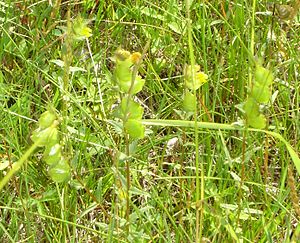[amazon_link asins=’1548691984,B071ZQ1CGV,B0711X4KCD,B01N4TFJ68,B072MQKNSG,154296198X,B015V10PNY,B071JBQKX8,B01KFIEEZI’ template=’ProductCarousel’ store=’finmeacur-20′ marketplace=’US’ link_id=’f0f7f49b-8bb6-11e7-899e-2b0011e7a58f’]
Botanical Name: Gentianella diemensis
Family: Gentianaceae
Genus: Gentianella
Kingdom: Plantae
Order: Gentianales
Synonyms: Gentiana diamensis.
Common Name: Mountain Gentian
Habitat : Gentianella diemensis is native to Australia – New South Wales, South Australia, Tasmania, Victoria. It grows on swamps, usually found at high elevations.
Description:
Gentianella diemensis is a annual/perennial plant, growing to 0.3 m (1ft). It is in flower from Aug to September. The flowers are hermaphrodite (have both male and female organs) and are pollinated by Bumblebees, butterflies….CLICK & SEE THE PICTURES
Suitable for: light (sandy), medium (loamy) and heavy (clay) soils and prefers well-drained soil. Suitable pH: acid, neutral and basic (alkaline) soils. It can grow in semi-shade (light woodland) or no shade. It prefers moist soil.
Cultivation:
We have almost no information on this species and do not know if it will be hardy in Britain. The following notes are based on the general needs of the genus. In general, gentians require a moist well-drained soil in a sheltered position, a certain minimum of atmospheric humidity, high light intensity but a site where temperatures are not too high. They are therefore more difficult to grow in areas with hot summers and in such a region they appreciate some protection from the strongest sunlight. Most species will grow well in the rock garden. A moisture loving plant, preferring to grow with full exposure to the sun but with plenty of underground moisture in the summer, it grows better in the north and west of Britain. Plants are intolerant of root disturbance.
Propagation :
Seed – best sown as soon as it is ripe in a light position in a cold frame. It can also be sown in late winter or early spring but the seed germinates best if given a period of cold stratification and quickly loses viability when stored, with older seed germinating slowly and erratically. It is advantageous to keep the seed at about 10°c for a few days after sowing, to enable the seed to imbibe moisture. Following this with a period of at least 5 – 6 weeks with temperatures falling to between 0 and -5°c will usually produce reasonable germination. It is best to use clay pots, since plastic ones do not drain so freely and the moister conditions encourage the growth of moss, which will prevent germination of the seed. The seed should be surface-sown, or only covered with a very light dressing of compost. The seed requires dark for germination, so the pots should be covered with something like newspaper or be kept in the dark. Pot up the seedlings into individual pots as soon as they are large enough to handle and grow on in light shade in the greenhouse for at least their first winter. The seedlings grow on very slowly, taking 2 – 7 years to reach flowering size. When the plants are of sufficient size, place them out into their permanent positions in late spring or early summer.
Medicinal Uses:
Bitter; Tonic.
The root is a bitter tonic. It is taken internally as a tonic to the digestive system.
Disclaimer : The information presented herein is intended for educational purposes only. Individual results may vary, and before using any supplement, it is always advisable to consult with your own health care provider.
Resources:
https://en.wikipedia.org/wiki/Gentianella_barringtonensis
http://www.pfaf.org/user/Plant.aspx?LatinName=Gentianella+diemensis
http://www.rbg.vic.gov.au/dbpages/rbgcensus/index.php/census/species_detail/14001












![Reblog this post [with Zemanta]](https://i0.wp.com/img.zemanta.com/reblog_e.png?w=580)









